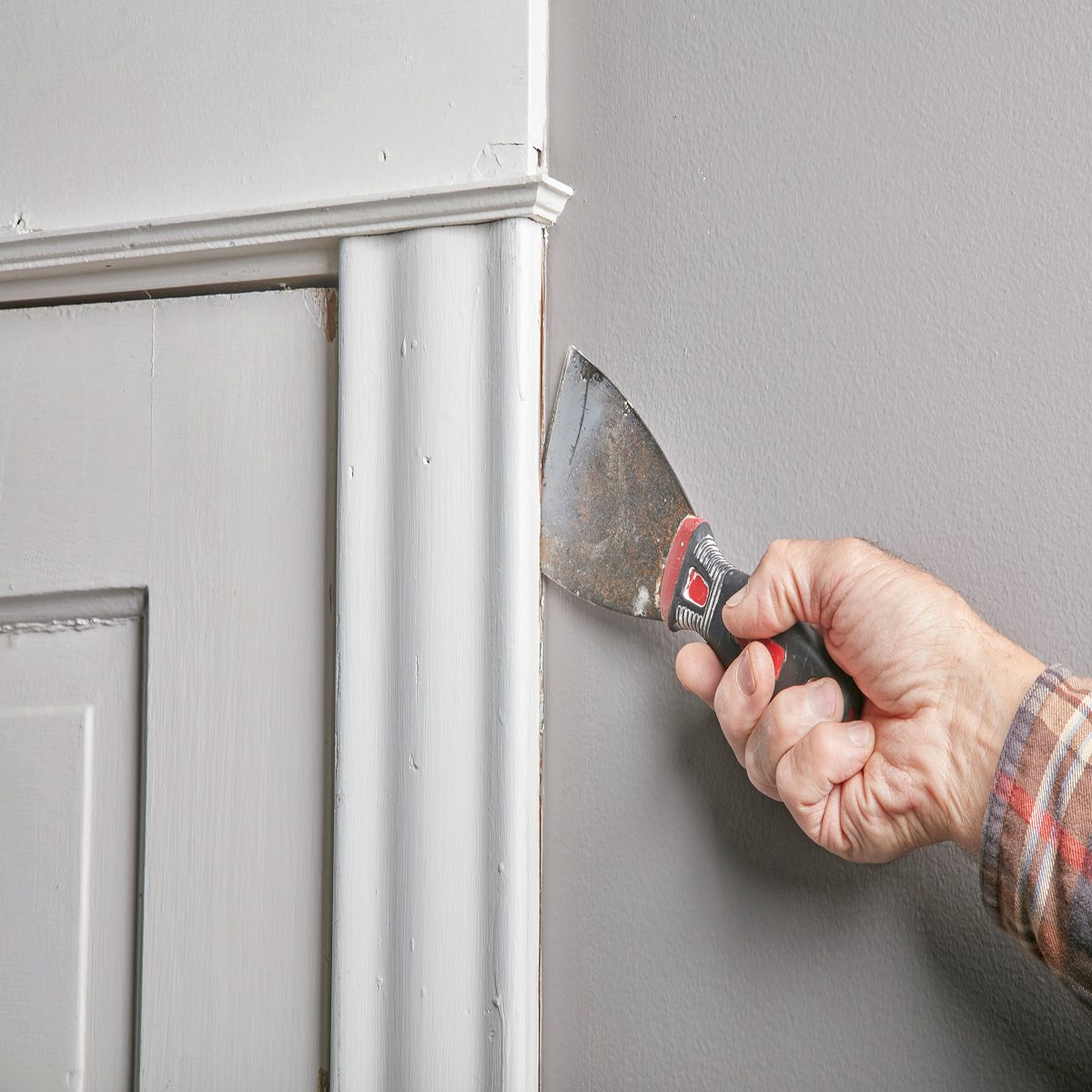Remove trim without damaging it (or the wall)

There’s an art to removing trim, whether you need to take off a few pieces of skirting board to install a built-in bookcase or remove all the trim in a room for a renovating project. You have to do it properly to avoid damaging the walls, and the trim if you plan to reuse it. We’ll show you how to do the job and keep the collateral damage as low as possible.
Slice the paint away from the wall

This tip applies mainly to painted trim. It is common for mouldings to be stuck to the wall, or for adjacent pieces of trim to be stuck together, either from caulk or years of built-up paint. If you don’t slice through the caulk or paint, the trim will be harder to remove. More importantly, the wall or trim may get damaged. Use a sharp blade in a utility knife to cut along the joint to separate the trim. Be prepared to change blades frequently, because dried paint is hard to cut and tough on blades.
Start with a putty knife

Before you can start using a pry bar to pull trim from a wall, you have to coax the trim loose to create a crack for the pry bar to fit into. The best tool for doing this is a stiff, sharp scraper blade. A painter’s 9-in-1 tool also works well. Don’t be afraid to tap the end of the tool with your hammer to drive it behind the moulding. Then wiggle and push until you’ve created a crack big enough for the pry bar.








